Woodworking storage is the backbone of any successful workshop. It’s not just about keeping tools and materials tidy; it’s about creating a space that flows efficiently, promotes safety, and inspires creativity. Imagine a workshop where everything has its place, where tools are easily accessible, and where you can find what you need without frustration. This is the power of well-organized woodworking storage.
From cabinets and shelves to pegboards and rolling carts, there’s a wide range of storage solutions available. Understanding the different types and their benefits can help you choose the right combination for your workshop. But it’s not just about the tools and materials; designing a system that maximizes space, prioritizes safety, and encourages a smooth workflow is essential.
Introduction to Woodworking Storage
Woodworking, a rewarding and creative hobby, can quickly become overwhelming if you don’t have a well-organized workspace. Efficient storage is crucial for a productive and enjoyable woodworking experience. Without proper storage, finding the right tool or material can turn into a frustrating scavenger hunt, leading to wasted time and lost momentum.
Challenges of Organizing Woodworking Tools and Materials
Organizing woodworking tools and materials presents unique challenges. The sheer variety of tools, from hand planes to power saws, and the diverse range of materials, from hardwoods to plywood, requires a systematic approach to storage. Additionally, woodworking tools and materials often have specific requirements for storage, such as dust protection, moisture control, and proper organization for easy access.
- Space limitations: Woodworking tools and materials can take up a lot of space, especially if you have a large collection. This can be a challenge, particularly if you have limited workspace.
- Tool organization: Keeping track of various tools, from hand planes to power saws, can be difficult. You need a system that allows you to quickly find the tool you need.
- Material storage: Woodworking materials, such as lumber, plywood, and hardware, can be bulky and prone to damage. You need a way to store them safely and efficiently.
- Dust and moisture control: Woodworking tools and materials are susceptible to dust and moisture. You need to store them in a way that protects them from these elements.
Types of Woodworking Storage Solutions
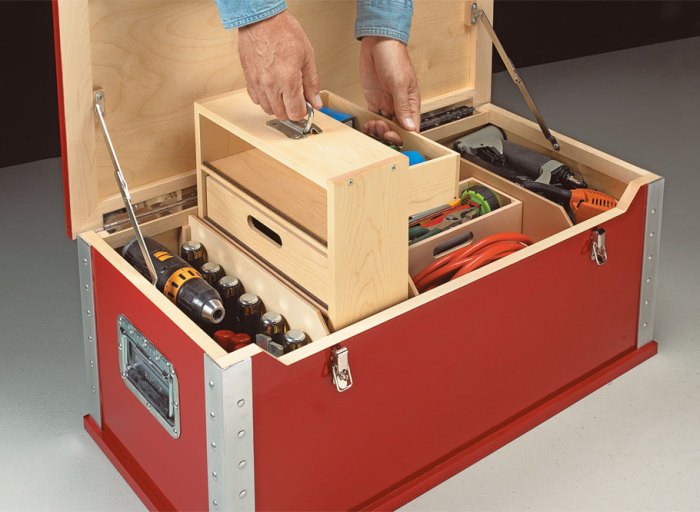
Choosing the right storage solutions is essential for any woodworker, as it helps keep your tools organized, accessible, and protected. This will make your workspace more efficient and enjoyable. There are various storage options available, each with its own advantages and disadvantages.
Cabinets
Cabinets offer a secure and enclosed storage solution for woodworking tools and materials. They are typically made from durable materials like wood, metal, or plastic.
- Advantages: Cabinets provide a dedicated space for storing tools, materials, and supplies, keeping them protected from dust, moisture, and damage. They also offer a clean and organized appearance for your workspace.
- Disadvantages: Cabinets can be more expensive than other storage solutions, and they can take up more space. They may also require some assembly.
- Examples:
- Woodworking cabinets: These are often made from high-quality wood, such as maple or cherry, and offer a traditional look and feel. Examples include the Rockler Woodworking Cabinet System and the Grizzly Industrial Cabinet System.
- Metal cabinets: These are more durable and resistant to damage, making them a good option for heavy-duty tools and materials. Examples include the DeWalt Tool Cabinet and the Stanley FatMax Tool Cabinet.
Shelves
Shelves are a versatile and affordable storage solution for woodworking tools and materials. They come in various sizes and materials, making them suitable for different needs.
- Advantages: Shelves are relatively inexpensive, easy to install, and can be customized to fit your specific requirements. They offer a clear view of your tools and materials, making it easy to find what you need.
- Disadvantages: Shelves are not as secure as cabinets, and they can be more prone to dust and moisture damage. They may also not be suitable for storing heavy tools or materials.
- Examples:
- Wall-mounted shelves: These are ideal for small tools and materials, and they can be installed in various configurations to maximize space. Examples include the Kreg Shelf System and the Garage Logic Shelf System.
- Freestanding shelves: These are more stable and can support heavier loads, making them suitable for larger tools and materials. Examples include the IKEA Kallax Shelving Unit and the Rubbermaid Commercial Products Brute Shelving Unit.
Pegboards
Pegboards are a popular storage solution for woodworking tools, as they offer a flexible and customizable way to organize your tools and materials.
- Advantages: Pegboards are relatively inexpensive, easy to install, and allow for easy access to your tools. They offer a visual display of your tools, making it easy to find what you need.
- Disadvantages: Pegboards can be less secure than other storage solutions, and they may not be suitable for storing heavier tools or materials. They can also be prone to dust and moisture damage.
- Examples:
- Traditional pegboards: These are made from perforated hardboard and offer a classic look. They are available in various sizes and can be customized with different hooks and accessories.
- Magnetic pegboards: These are made from steel and allow you to use magnetic hooks and accessories. They are ideal for storing metal tools and accessories.
Tool Chests
Tool chests are a robust and portable storage solution for woodworking tools, offering a secure and organized way to transport and store your tools.
- Advantages: Tool chests provide a secure and organized way to store your tools, keeping them protected from damage and theft. They are also portable, allowing you to easily transport your tools to different locations.
- Disadvantages: Tool chests can be expensive, and they can be heavy and difficult to move. They may also not be suitable for storing large tools or materials.
- Examples:
- Rolling tool chests: These are equipped with wheels, making them easy to move around your workspace. They are also typically larger and can accommodate a wider range of tools.
- Portable tool chests: These are smaller and more compact, making them ideal for transporting tools to and from job sites.
Rolling Carts
Rolling carts are a versatile and mobile storage solution for woodworking tools and materials, providing a convenient way to move tools and supplies around your workspace.
- Advantages: Rolling carts are easy to maneuver, making it easy to move tools and materials around your workspace. They are also typically equipped with drawers, shelves, and other features that make them highly functional.
- Disadvantages: Rolling carts can be more expensive than other storage solutions, and they may not be suitable for storing heavy tools or materials. They may also be less secure than cabinets.
- Examples:
- Tool carts: These are designed specifically for storing woodworking tools and materials, and they typically have drawers, shelves, and other features that make them ideal for organizing your tools.
- Utility carts: These are more general-purpose carts that can be used for storing a variety of items, including woodworking tools and materials.
Designing a Woodworking Storage System
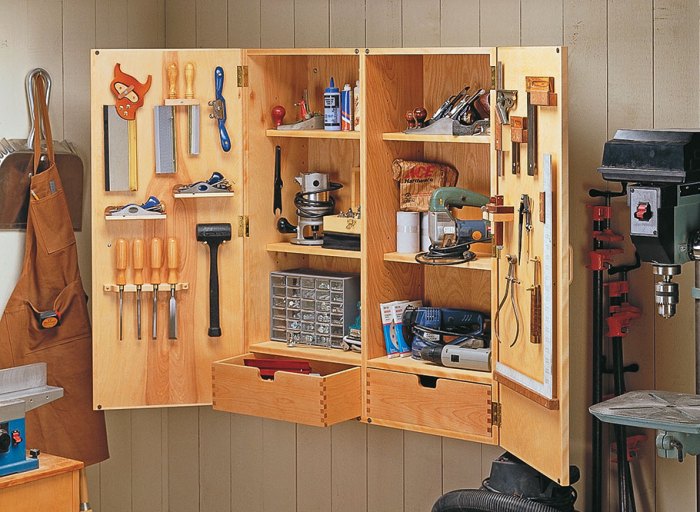
Designing a woodworking storage system is like crafting a piece of furniture – it requires careful planning, consideration of materials, and attention to detail. A well-designed storage system maximizes space utilization, ensures easy access to tools and materials, and prioritizes safety and ergonomics.
Steps in Designing a Woodworking Storage System
Designing a woodworking storage system involves a series of steps that help you create a functional and efficient workspace.
- Assess your needs: Start by identifying the tools, materials, and projects you work with most frequently. Consider the size and weight of your items to determine the type of storage solution required.
- Measure your space: Take accurate measurements of your workshop or storage area. Consider the available floor space, wall space, and ceiling height.
- Create a layout: Sketch out a layout of your storage system, considering the placement of different storage units, workstations, and walkways.
- Choose storage solutions: Select storage solutions that suit your needs and space. Consider cabinets, shelves, drawers, pegboards, tool organizers, and workbenches.
- Prioritize accessibility: Arrange items in a way that allows easy access to frequently used tools and materials.
- Consider safety and ergonomics: Ensure your storage system promotes safety by providing secure storage for hazardous materials and tools. Consider ergonomic factors like reaching heights and lifting weights.
- Implement and adjust: Once you’ve installed your storage system, take some time to use it and identify areas for improvement. Make adjustments as needed to optimize your workspace.
Essential Woodworking Storage Items
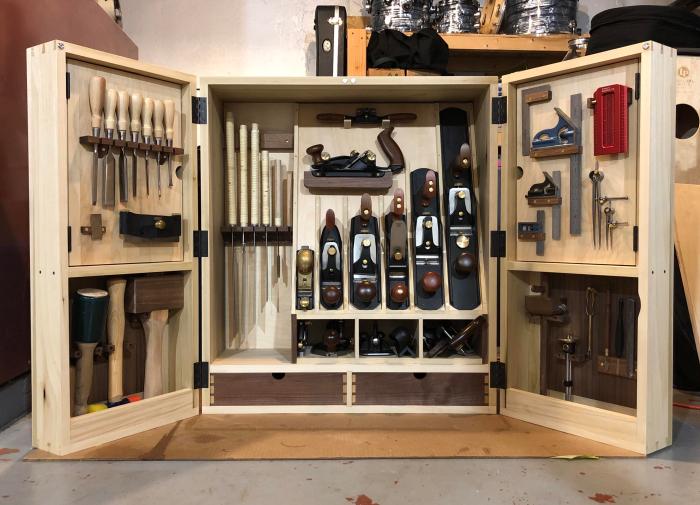
Having the right tools and materials readily available is crucial for a productive woodworking experience. A well-organized storage system ensures you can find what you need quickly and efficiently, minimizing wasted time and frustration. Here’s a breakdown of essential woodworking storage items, categorized for clarity and convenience.
Hand Tools
Hand tools are the backbone of any woodworking project. They provide versatility, precision, and control, making them indispensable for various tasks.
- Hammers: Choose a claw hammer for general carpentry and a rubber mallet for delicate work. Store hammers on a pegboard or in a tool rack for easy access.
- Screwdrivers: A set of both Phillips and flathead screwdrivers in various sizes is essential. Consider a magnetic screwdriver holder for keeping them organized and preventing them from rolling away.
- Chisels: A set of chisels with different widths and bevel angles is crucial for shaping and carving wood. Store chisels in a dedicated drawer or on a tool rack, with their blades protected.
- Planes: A block plane and a smoothing plane are essential for shaping and smoothing wood surfaces. Keep planes in a designated area, away from other tools to prevent damage to their blades.
- Saws: A handsaw, a backsaw, and a coping saw provide different cutting capabilities. Store saws on a dedicated saw rack or in a tool chest with their blades protected.
- Measuring Tools: A tape measure, a ruler, a combination square, and a protractor are essential for accurate measurements. Store measuring tools in a dedicated drawer or on a magnetic strip for easy access.
- Clamps: A variety of clamps, including bar clamps, spring clamps, and C-clamps, are essential for holding pieces together during assembly and gluing. Store clamps in a dedicated area or on a clamp rack.
- Sandpaper: Assorted grits of sandpaper are essential for smoothing and finishing wood surfaces. Store sandpaper in a dedicated drawer or in a roll-up sandpaper holder.
- Woodworking Mallet: A rubber mallet is ideal for striking chisels and other tools without damaging the wood. Store it near your other hand tools.
- Sharpening Tools: A sharpening steel, a honing guide, and a sharpening stone are essential for maintaining sharp edges on your tools. Store them in a dedicated drawer or on a tool rack.
Power Tools
Power tools significantly enhance woodworking efficiency and capability. Invest in quality power tools that suit your needs and budget.
- Circular Saw: A circular saw is a versatile tool for making straight cuts and ripping lumber. Store it in a dedicated tool chest or on a shelf, with its blade protected.
- Jigsaw: A jigsaw is ideal for making intricate cuts and curves in wood. Store it in a dedicated tool chest or on a shelf, with its blade protected.
- Drill/Driver: A cordless drill/driver is essential for drilling holes and driving screws. Store it in a dedicated tool chest or on a shelf, with its battery charged.
- Router: A router is a powerful tool for shaping and trimming edges. Store it in a dedicated tool chest or on a shelf, with its bits protected.
- Belt Sander: A belt sander is essential for sanding large surfaces quickly and efficiently. Store it in a dedicated tool chest or on a shelf, with its belt protected.
- Random Orbit Sander: A random orbit sander is ideal for sanding smaller surfaces and achieving a smooth finish. Store it in a dedicated tool chest or on a shelf, with its sanding discs protected.
- Table Saw: A table saw is a powerful tool for making precise, straight cuts. Store it in a dedicated area, with its blade protected.
Woodworking Materials
Woodworking materials are the raw ingredients for your projects. Choose quality materials that meet your project requirements and budget.
- Lumber: A variety of wood species, including hardwoods, softwoods, and plywood, are essential for woodworking projects. Store lumber in a dry, well-ventilated area to prevent warping and damage.
- Wood Glue: Wood glue is essential for bonding wood pieces together. Store it in a cool, dry place.
- Wood Finish: A variety of wood finishes, including stains, paints, varnishes, and oils, are essential for protecting and enhancing the appearance of wood. Store finishes in a well-ventilated area, away from heat and direct sunlight.
- Fasteners: A variety of fasteners, including screws, nails, and staples, are essential for assembling woodworking projects. Store fasteners in labeled containers or drawers for easy access.
- Hardware: A variety of hardware, including hinges, handles, and drawer slides, are essential for completing woodworking projects. Store hardware in labeled containers or drawers for easy access.
- Woodworking Accessories: A variety of woodworking accessories, including sanding blocks, brushes, and chisels, are essential for completing woodworking projects. Store accessories in labeled containers or drawers for easy access.
Safety Gear, Woodworking storage
Safety should always be a top priority when working with woodworking tools and materials.
- Safety Glasses: Safety glasses protect your eyes from flying debris. Store them in a convenient location where you can easily grab them before starting any woodworking project.
- Dust Mask: A dust mask protects your lungs from sawdust and other airborne particles. Store it in a clean, dry location.
- Hearing Protection: Hearing protection is essential for protecting your ears from loud noise. Store it in a convenient location where you can easily grab it before starting any woodworking project.
- Work Gloves: Work gloves protect your hands from splinters and other injuries. Store them in a convenient location where you can easily grab them before starting any woodworking project.
Storage Solutions
- Tool Chests: Tool chests provide secure storage for your tools and materials. Choose a chest that is the right size for your needs and has compartments and drawers for organizing your tools.
- Tool Cabinets: Tool cabinets offer more storage space than tool chests and often include a workbench surface. Choose a cabinet that is the right size for your needs and has compartments and drawers for organizing your tools.
- Pegboards: Pegboards are great for storing hand tools and other small items. You can easily customize the layout of a pegboard to fit your needs.
- Shelves: Shelves are essential for storing lumber, wood finishes, and other larger items. Choose shelves that are strong enough to support the weight of your materials.
- Drawers: Drawers are great for storing smaller items, such as sandpaper, screws, and hardware. Choose drawers that are the right size for your needs and have dividers for organizing your items.
- Storage Bins: Storage bins are versatile for storing a variety of items, including tools, materials, and accessories. Choose bins that are the right size for your needs and are made of a durable material.
Woodworking Storage Organization Techniques
Organization is the key to an efficient and productive woodworking space. A well-organized workspace helps you find what you need quickly, prevents clutter, and keeps your tools in good condition.
Labeling
Labeling is essential for quickly identifying items in your woodworking storage.
- Use clear, concise labels that are easy to read from a distance.
- Consider using a label maker or a permanent marker for durability.
- Label drawers, shelves, bins, and even individual tools.
For example, instead of labeling a drawer simply as “Screws,” you could label it “Wood Screws,” “Drywall Screws,” or “Deck Screws” for more specific organization. This makes it easier to find the right screws for your project.
Color-Coding
Color-coding is another effective way to organize your woodworking storage.
- Assign a color to each category of tools or materials.
- Use colored labels, tape, or even paint to identify items.
- For example, you could use blue for woodworking tools, green for painting supplies, and red for electrical tools.
This helps you visually identify items quickly and easily. Color-coding can also be used in conjunction with labeling for an even more organized system.
Using Dividers
Dividers are useful for separating items within drawers, shelves, and bins.
- Use adjustable dividers to create custom compartments for your tools and materials.
- You can find dividers made from wood, plastic, or metal.
- Dividers help prevent items from shifting and getting lost in storage.
For instance, in a drawer containing various woodworking tools, dividers can separate chisels, screwdrivers, and wrenches, making it easier to find what you need.
Maintaining an Organized Woodworking Space
Maintaining an organized woodworking space requires a little effort, but it’s well worth it.
- Put tools and materials away immediately after use.
- Clean up spills and debris promptly.
- Regularly review your storage system and make adjustments as needed.
“A place for everything, and everything in its place”
This adage is especially true for woodworking spaces. A consistent routine will help you keep your space organized and productive.
Benefits of an Organized Woodworking Storage System
A well-organized woodworking storage system offers several benefits.
- Increased Efficiency: An organized space helps you find what you need quickly, saving you time and effort.
- Enhanced Productivity: A clutter-free workspace promotes focus and reduces distractions, leading to greater productivity.
- Improved Safety: Organized storage helps prevent accidents by keeping tools and materials in their designated places.
- Reduced Stress: A well-organized space can create a sense of calm and order, reducing stress and improving your overall woodworking experience.
DIY Woodworking Storage Projects
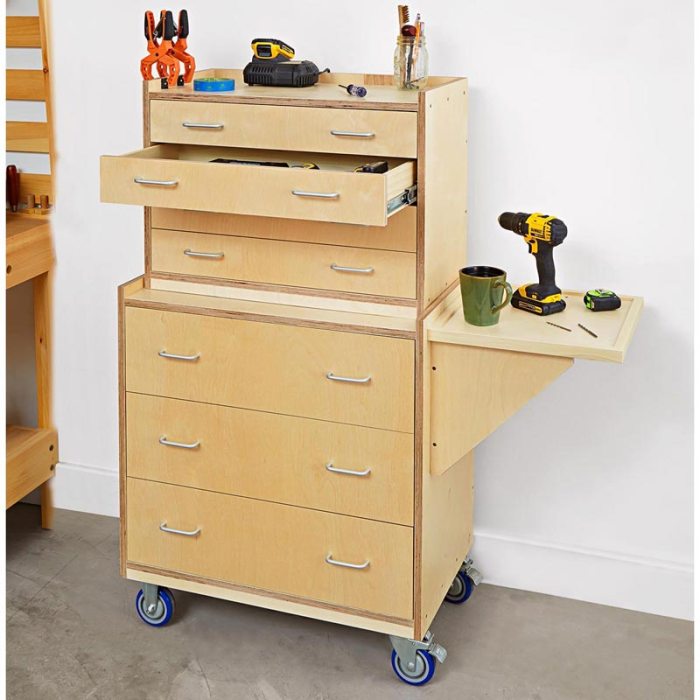
Taking on DIY woodworking storage projects is a rewarding way to create custom solutions that perfectly fit your needs and style. Building your own storage can be a fun and fulfilling experience, offering a sense of accomplishment and the satisfaction of creating something practical and useful.
Simple DIY Woodworking Storage Projects
Here are some simple DIY woodworking storage projects that are perfect for beginners:
- Tool Rack: A tool rack is a basic yet essential storage solution for hand tools. You can create a simple rack using a few pieces of wood and some screws or nails. Design ideas include vertical or horizontal racks, with shelves or hooks for different tool types.
- Pegboard: Pegboards are incredibly versatile for organizing tools, supplies, and small parts. You can build a pegboard frame from wood or use a pre-made pegboard panel. Add hooks, shelves, and bins to customize the storage to your needs.
- Workbench Cart: A workbench cart provides a mobile workspace and storage for tools and materials. You can create a basic cart using plywood, wheels, and some simple hardware.
- Tool Cabinet: A tool cabinet offers secure and organized storage for tools and supplies. You can build a simple cabinet using plywood, hinges, and a drawer slide system.
Design Ideas and Customization Tips
These are some design ideas and customization tips to make your DIY woodworking storage projects unique:
- Consider your space: Measure your workspace carefully and plan your storage accordingly.
- Choose the right materials: Select wood that is durable and easy to work with. Consider using plywood for cabinets and shelves, and hardwood for accents or decorative elements.
- Add finishing touches: Paint, stain, or varnish your storage projects to give them a personalized look. You can also add decorative hardware or labels.
- Think about functionality: Design your storage with specific tools and materials in mind. Use shelves for larger items, hooks for hanging tools, and bins for small parts.
- Incorporate lighting: Adding lighting to your storage area can make it easier to find tools and supplies.
Advantages and Disadvantages of DIY Woodworking Storage Projects
Here are some advantages and disadvantages of building your own woodworking storage:
Advantages
- Customization: You can design your storage to perfectly fit your needs and style.
- Cost-effective: Building your own storage can be more cost-effective than buying pre-made solutions.
- Sense of accomplishment: Building your own storage can be a rewarding and satisfying experience.
Disadvantages
- Time commitment: Building your own storage takes time and effort.
- Skill required: Some woodworking skills are necessary to build your own storage.
- Potential for mistakes: There is always a chance of making mistakes when building something yourself.
Woodworking Storage Safety and Maintenance
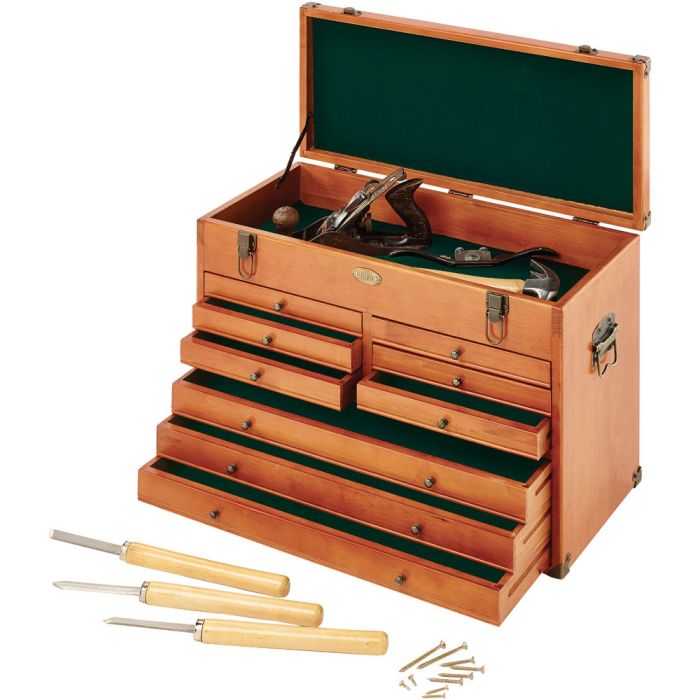
Keeping your woodworking storage area safe and well-maintained is crucial for protecting your tools, materials, and yourself. It ensures a long life for your equipment and helps you avoid accidents.
Safety Guidelines for Using and Maintaining Woodworking Storage Solutions
Following safety guidelines is essential to prevent accidents and ensure a safe woodworking environment.
- Always wear appropriate safety gear, such as gloves and eye protection, when handling tools and materials.
- Use proper lifting techniques to avoid injuries. When lifting heavy items, bend your knees and keep your back straight.
- Store sharp tools securely and out of reach of children. Consider using tool holders or magnetic strips to keep them organized and safe.
- Regularly inspect storage units for damage and make repairs promptly. Damaged units can compromise safety and lead to accidents.
- Ensure adequate ventilation in your workshop to prevent the buildup of dust and fumes. Use a dust collector and wear a respirator when necessary.
- Never overload storage shelves or drawers. Overloading can cause instability and lead to accidents.
- Follow the manufacturer’s instructions for using and maintaining your storage solutions.
Preventing Damage to Tools and Materials
Proper storage techniques help prevent damage to your valuable tools and materials.
- Store tools in their designated spaces. This prevents them from getting lost or damaged and makes it easier to find them when you need them.
- Use tool organizers and trays to keep small tools and accessories separate and organized. This prevents them from getting lost or mixed up.
- Protect tools from moisture and rust. Store them in a dry place or use rust inhibitors if necessary.
- Store wood and other materials in a dry and well-ventilated area. Moisture can warp wood and damage other materials.
- Use protective coverings for delicate tools and equipment. This prevents them from getting scratched or damaged.
Cleaning and Organizing Woodworking Storage Spaces
A clean and organized workspace is essential for safety and efficiency.
- Clean your storage area regularly. This helps to prevent dust and debris buildup, which can damage tools and materials.
- Organize your tools and materials according to their type and frequency of use. This makes it easier to find what you need and keeps your workspace tidy.
- Use labels to identify tools and materials. This makes it easier to find what you need and keeps your workspace organized.
- Consider using a pegboard or other wall-mounted storage solutions to maximize space and keep tools accessible.
- Dispose of any unnecessary or damaged items. This helps to free up space and keep your workspace organized.
Final Wrap-Up: Woodworking Storage
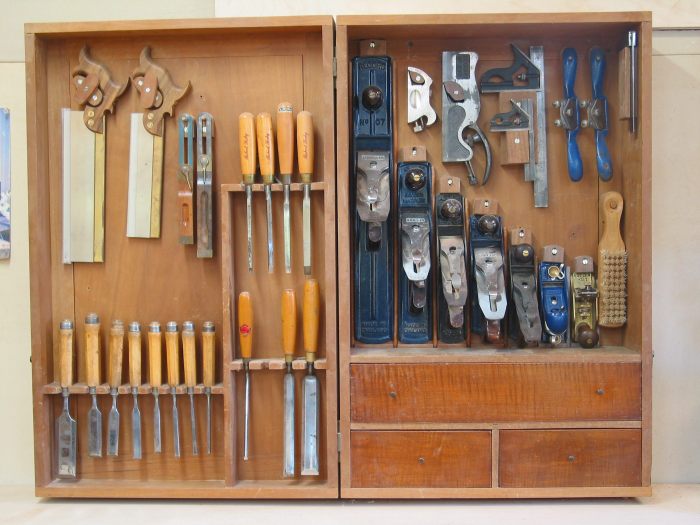
By embracing the principles of efficient woodworking storage, you’re not just organizing your workshop; you’re investing in your woodworking journey. A well-organized space fosters productivity, creativity, and enjoyment. It’s about making the most of your workshop, ensuring your tools are protected, and maximizing your woodworking potential. So, take the time to plan, organize, and personalize your woodworking storage system. Your workshop will thank you for it.
Clarifying Questions
What are some essential woodworking storage items?
Essential items include tool chests, pegboards, rolling carts, shelves, cabinets, and storage bins. These provide a foundation for organizing your tools, materials, and accessories.
How do I choose the right storage solutions for my workshop?
Consider your space, the types of projects you work on, and the tools you use most frequently. Prioritize accessibility and safety in your storage design.
What are some tips for maintaining an organized woodworking space?
Regularly clean and declutter, label your storage containers, and use dividers to separate items. Establish a system for putting tools and materials back in their designated places.
Woodworking storage is crucial for keeping your workshop organized and efficient. You can’t go wrong with dedicated storage solutions, and woodworking cabinets offer a great way to keep your tools, materials, and projects tidy. With well-designed cabinets, you’ll have a dedicated space for everything, making it easier to find what you need and keep your workshop running smoothly.
